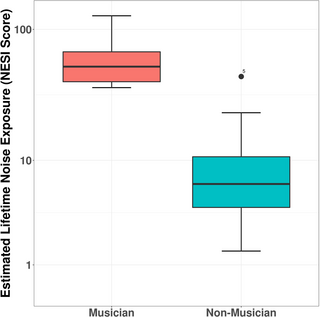I found these findings interesting: (quoting from the study):
Overall, musicians preferred to listen to music at a higher sound level [dB (A)] than non-musicians. Thus, the hypothesis that musicians prefer to listen to music at higher sound levels can be accepted. The difference in preferred music-listening level may be the result of an intrinsic effect of other differences found between the two groups such as musicians having a stronger emotional experience when listening to music [
24] and/or the differences in brain anatomy in areas that process motor, sensory and cognitive performances [
25]. Previous studies into differences between musicians and non-musicians have also revealed that musicians have significantly stronger activation of some brain areas, such as the left inferior parietal lobe (IPL), than non-musicians [
24,
26]. The IPL has a key role in sensory and emotional perception [
24,
27].
The present study also assessed individual musical preference and its effect on preferred music-listening level, as previous research has indicated that sounds that are enjoyed are perceived as being quieter [
16,
28]. Irrespective of group, participants listened to music they preferred at a level approximately 11 dB higher than music they liked less.
Furthermore, analysis of the descriptive statistics for the dB(A) level which participants preferred for music compared to the bird song, revealed that participants preferred to enjoy the music at a higher level than the bird song. These data are broadly in line with the findings from Cullari & Semanchick [
28] and Fucci [
16], who assessed loudness perception and music preferences, and their findings support the hypothesis that when an individual does not perceive a sound as ‘noise’, such sound is perceived to be quieter and therefore could be listened to at a higher listening-level.
This leads to the third aim of the current study, which was to assess whether there was a correlation between estimated lifetime noise exposure and preferred music-listening level. A moderate positive correlation was found, demonstrating that individuals with greater noise exposure preferred to listen to music at higher levels. Additionally, statistical analysis also revealed that musicians had greater life-time exposure to noise compared to non-musicians.”

 journals.plos.org
journals.plos.org

